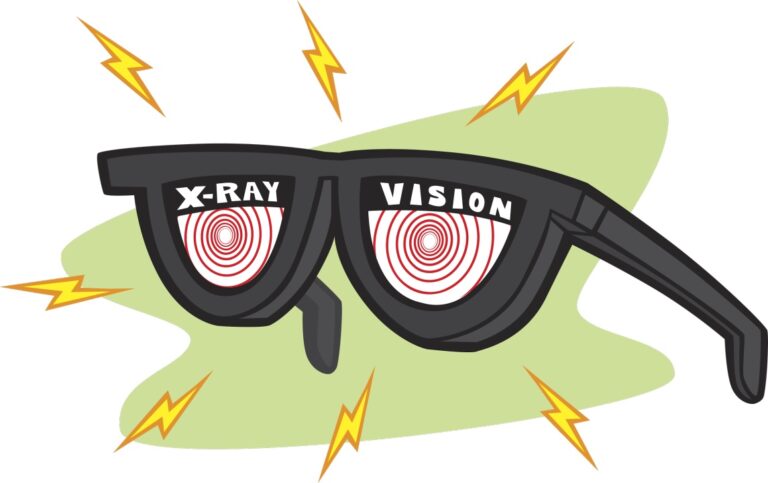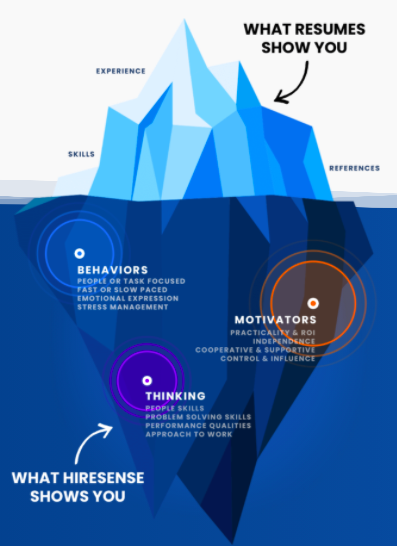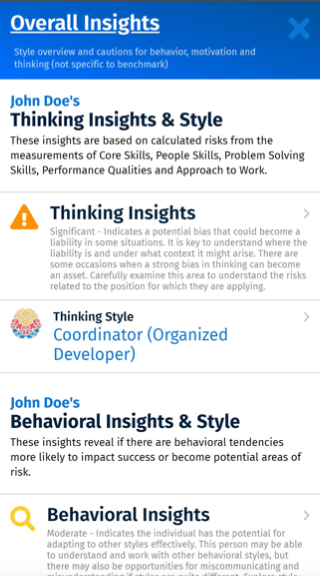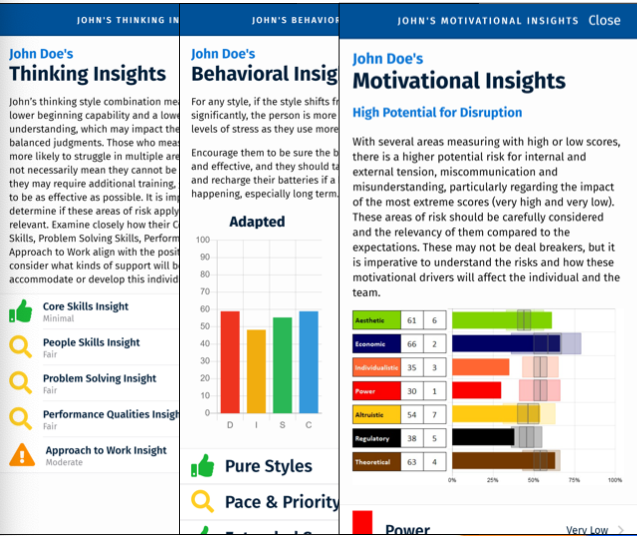
A while back, I wrote an article about “Motivators,” the underlying facets of our personalities that influence and drive our beliefs, values and attitudes — and in turn, our behaviors. I started the article with this question: “Did you know that hiring the wrong person can cost a company as much as 10 times their salary?”
Identifying the right person can be difficult, but no matter what, ultimately making that new hire is risky. It involves making a financial commitment, which if fails, will never yield a refund. Oversights, mistakes or mediocre work can all amplify the original downside of the hire and end up costing the company even more money or good will among existing customers and employees — this even before considering the opportunity costs. Good hiring is really important, but so often companies are mired in a deficient or inadequate hiring process.
The “Motivators” article that I wrote was meant to introduce a tool that could possibly help employers differentiate candidates and identify the ones who seem to match the company’s values closely. In this article, I’m going to write about a new assessment platform built specifically around the notions of hiring and internal promotions or reorganizations – and (spoiler alert) it includes the Motivators assessment as a major component.
When making a hiring decision, once you’ve narrowed the field to a few finalists but are simply unable to decide who would be the best fit, then a deeper look at the candidates could dramatically help the process. Or perhaps you had some candidates interview with a few different people at your organization, but there was no agreement reached on the best candidate. Could a deeper dive get you closer to consensus? Maybe you’ve thought about doing some internal reorganization, possibly including some promotions, but you’d like more insights about the people and teams involved — such as who would make a good fit on which team and how you might build teams that are set up for success from the start?
In today’s times, HR Departments and hiring managers the world-over face such questions. Further, it’s increasingly common to experience friction in the hiring process that’s only been exacerbated by the pandemic. It’s hard enough deciding about candidates to begin with, but when you can’t meet them in person and all you have to go on is a résumé and some Zoom calls, the process can quickly become rife with even more uncertainty, indecision and potentially costly mistakes.
Enter HireSense.
HireSense is a platform developed by Assessments24x7, a global leader in assessment technology for more than 20 years.
HireSense recognizes that no single assessment will highlight everything we may want to know that is relevant to hiring a specific candidate or comparing two or more candidates. HireSense is therefore comprised of three, scientifically validated and reliable individual assessments that provide reports on behavior, motivators and critical thinking. It then takes the data points from all three and draws insights and highlights potential risks about each candidate.

The three underlying assessments are: DISC, Motivators and Critical Thinking. As mentioned, I’ve written about the Motivators assessment, and I’ve also written about the Hartman Value Profile assessment and critical thinking in previous posts. (I haven’t yet written about DISC because there is so much information on DISC already published and readily available online.)
As a brief summary, DISC reports on personality styles, such as Dominance, Influence, Steadiness and Conscientiousness. Motivators reports on which of seven motivators or combinations thereof drive our behaviors from below the surface. Critical Thinking examines our decision-making — how we see and appreciate uniqueness in people or situations (gut-level or intuitive thinking), what we notice and consider important when we problem-solve in the short-term (practical thinking), and how we view the world with all of its order, structure and standards (or lack thereof) when we engage in big-picture thinking or longer-term planning (systems thinking).
When these three assessments are stacked up and examined together, many deep insights can be drawn that may provide hiring managers with details about candidates that they would not have discovered on their own.
When these three assessments are stacked up and examined together, many deep insights can be drawn that may provide hiring managers with details about candidates that they would not have discovered on their own. It is then up to the hiring manager, Human Resources or other powers-that-be to determine whether the insights raised by HireSense are relevant enough to the role such that they should be considered as part of the selection discussions and process. It should be made very clear that HireSense is not meant to be used as the sole tool in making hiring decisions. Rather, it is ancillary and deep analysis that can unearth information about candidates that would not readily be available otherwise.
HireSense does much more than spew out assessment scores, though. To provide a small sampling, here are just some of the insights and/or risks you can expect to see in HireSense:
- Attitude Towards Work
- Ownership of Problems
- Realistic Assessment of People and Sensitivity to Others
- Practical and Strategic Problem-Solving Abilities
- Outcome Orientation
- Trainability
- Pride in Work Quality
- Acceptance of Leadership and Rules
…just to name a few of the significant ones. All of this is in addition to the foundational assessment results, such as the raw DISC Styles and Motivators rankings and scores.
HireSense makes use of “Benchmarks,” which can be thought of as templates containing the sought-after behavioral insights (as expressed in DISC) for the role being filled. The platform comes with dozens of pre-built Benchmarks spanning many industries. You can also tweak an existing Benchmark, create one from scratch, create a Benchmark by averaging a group of users’ assessment results, develop your own by answering a questionnaire about the role or import a Benchmark from someone else’s report. (If Bob is a rockstar employee and you keep telling yourself, “I could sure use another Bob,” well, here’s your chance to potentially find one.) When the final report is generated, these role-specific Benchmarks are graphically shown alongside the candidate’s results. Seeing how close or far away an individual’s personality style is from the role envisioned and represented in the Benchmark is one way to inform the decision.
HireSense has a system of Alerts that can be set to trigger/notify when a candidate comes close to meeting criteria that’s been pre-defined for a role. It provides insights for each of the 3 areas, behavior, motivators and critical thinking, and flags individual insights as either minimal, moderate or significant risk. An insight flagged as a risk is simply saying, “look more closely here.” The risk can represent a real matter for concern, or something that might be irrelevant to the role. (Hence the reason we still need humans.)
Finally, based on the responses to the assessment, HireSense will provide a slew of interview questions that enable a decision-maker to dig deeper into the areas where more examination or clarity is warranted.
The core of the HireSense user-facing technology is an app that will run on either a mobile device/phone/tablet or in a computer browser. Paper reports are available, but the app is quite sleek and cool – allowing you to see high-level topics and drill down to the specifics that explain what is being measured and what potential items might be important to look out for during the hiring process.

HireSense can be leveraged in two ways. The “do it yourself” version requires you or someone from your company to get certified in the 3 underlying assessments, with an additional fourth certification specific to the HireSense platform.
In the “full service” version, you work side by side with a certified practitioner (or coach.) It starts with an initial consultation call and a discussion of the ideal candidate. From there, you would select and/or create Benchmarks. Once your Benchmarks (and Alerts) are set up, you would generate and distribute links to the candidates to take the assessments. You will then regroup with your practitioner/coach for a comprehensive overview and a review of the results, which would include formulating some interview questions from the suggestions. Your coach will work with you until you make the hiring decision, and even discuss development opportunities for your newly hired employee.

There are no “crystal balls” in hiring — but hiring choices should not be made merely by reading a résumé and then depending on intuition. Nor should one automatically assume that the person with the most experience or deepest expertise is the best candidate. Employers should always look at a candidate’s people-skills, values, ability to appreciate the company’s mission and culture as well as how finely tuned someone’s decision-making process is. HireSense is a platform that can help employers see below the surface of their candidates and can add great value to a cumbersome and potentially awkward process. It won’t make the decision for you, but it will provide you with what you may need to make sure it’s an informed one.
You can learn more about HireSense at: https://www.hiresense.com